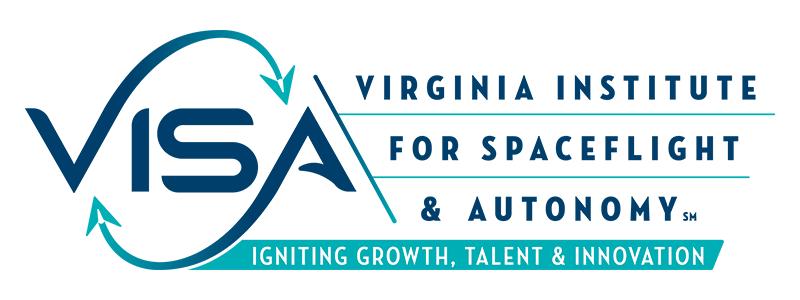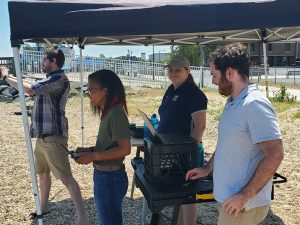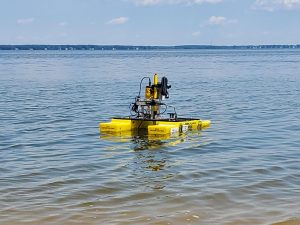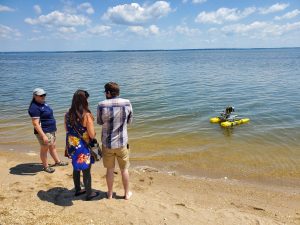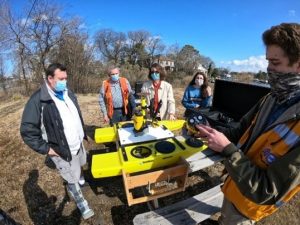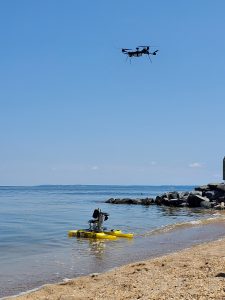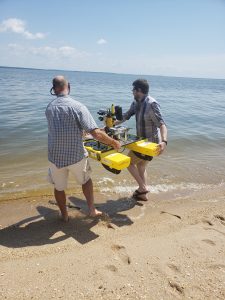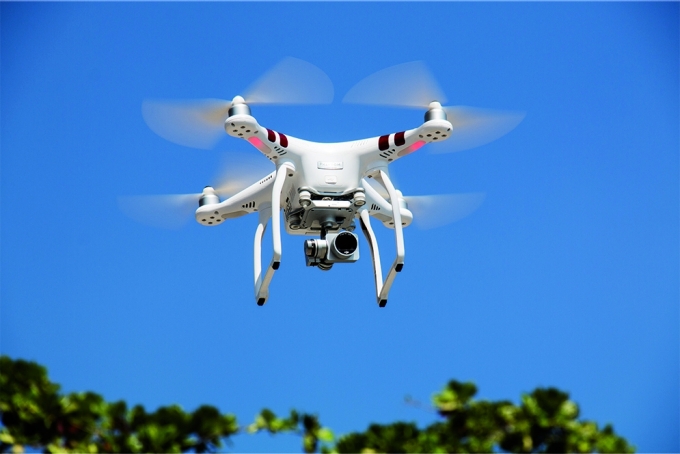
ODU’s Virginia Institute for Spaceflight & Autonomy Envisions the Future of Unmanned Systems
January 21, 2021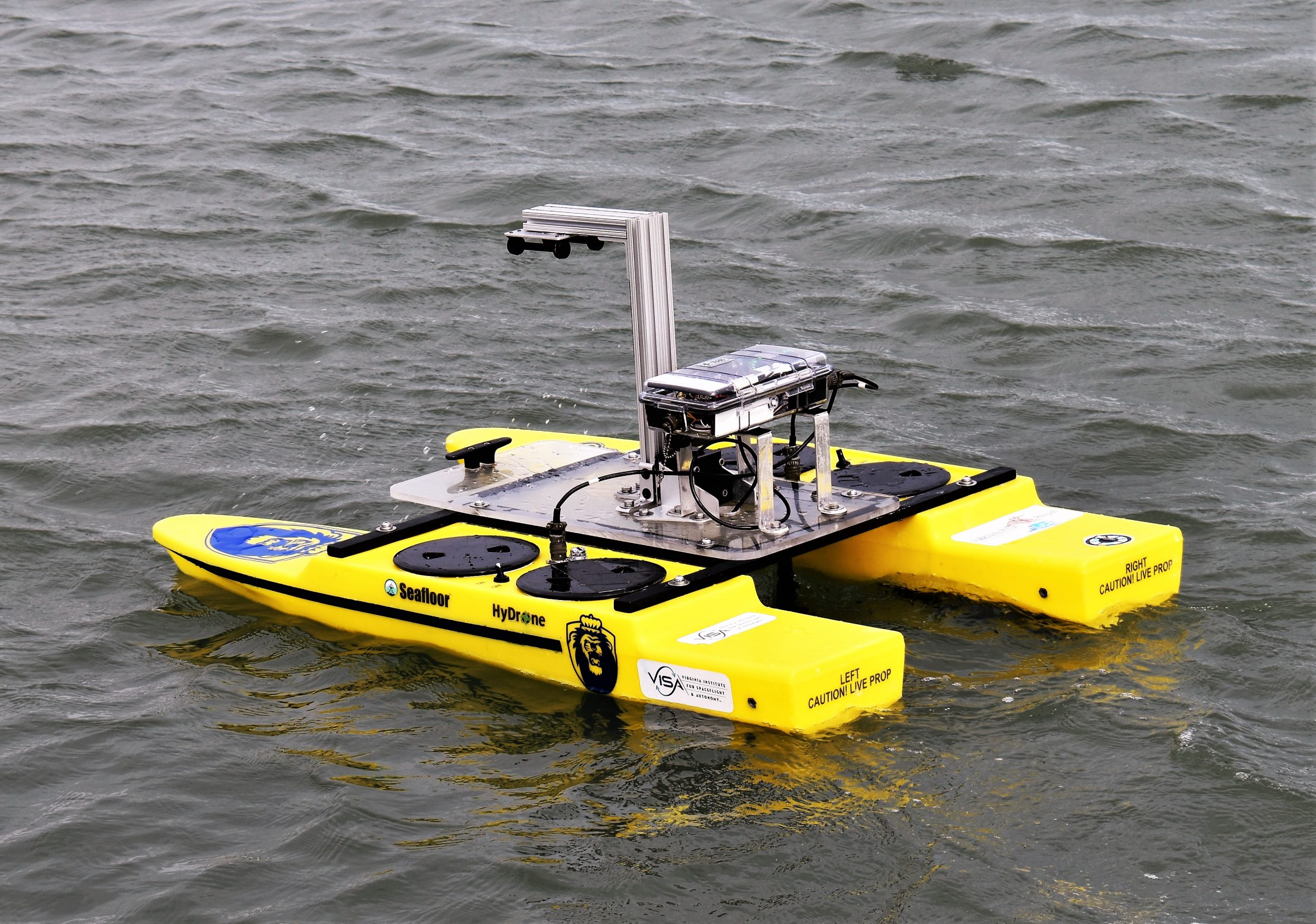
ODU Researchers Use Autonomous Hydrone to Help Coastal Community Map Shoreline
October 14, 2021Applying an Autonomous System for Coastal Resilience: An Update on the ODU Hydrone
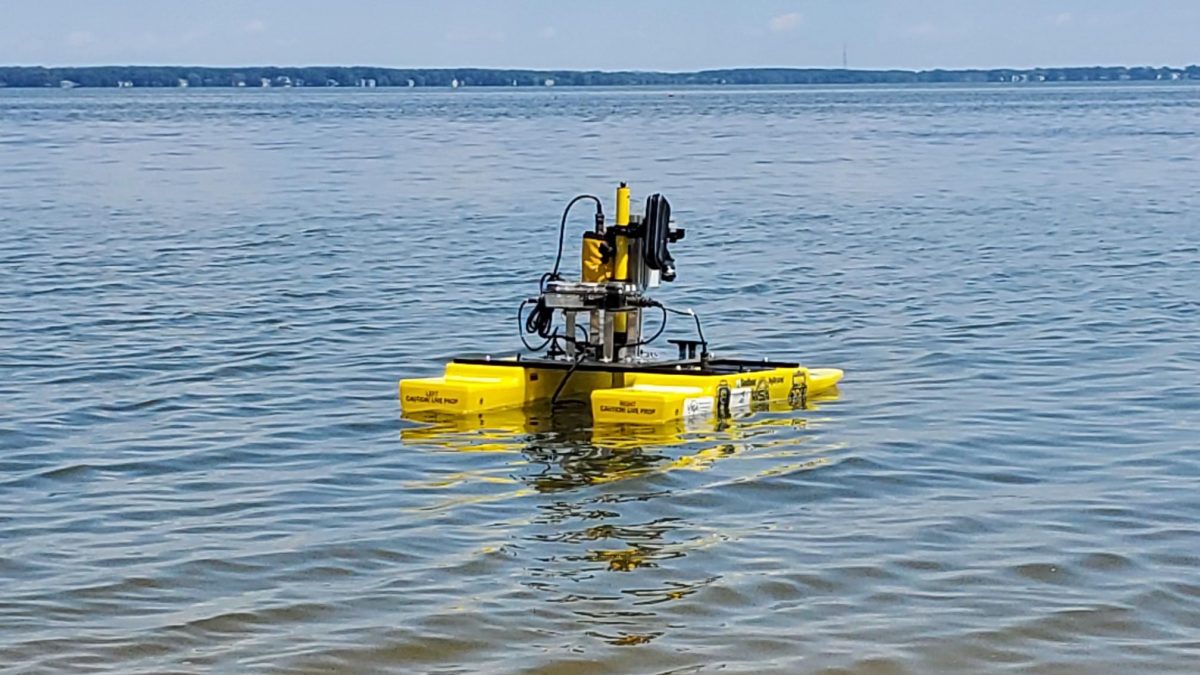
ODU’s collaborations on Maritime Autonomous Surface Vessels continued over the summer of 2021 with advances and demonstrations in both the technology and the applications to coastal community resilience. ODU is proving how Maritime Autonomous systems such as the Hydrone equipped with sensors can be effectively and efficiently used to collect and update critical environmental, infrastructure, or navigation data that “Smart Communities” initiatives employ. For example, the echosounder on the Hydrone can map navigation channels that could be obstructed by debris after a coastal storm, so the port and recreational boaters could be ensured of safety when resuming activity after a storm. The camera system on the Hydrone can collect photographs and video to do rapid damage assessment or collect baseline information on shoreline structures and assets such as docks, boats, and buildings, which can feed into GIS databases and emergency operations plans. Emergency responders can also use the Hydrone to inspect potential hazardous spills or render assistance while minimizing human risk. There are additional capabilities being explored to answer key questions and advanced predictive planning pertaining to water quality and red tide/algae bloom assessments.
With support from the Resilience Adaptation Feasibility Tool (RAFT) program and the Commonwealth Center for Recurrent Coastal Flooding (CCRFR), Dr. Tom Allen (ODU Geography and Institute for Coastal Adaptation and Resilience [ICAR], Dr. Thomas Alberts (ODU Mechanical and Aerospace Engineering), and Mr. George McLeod (ODU Information Technology Services) deployed the Hydrone, an Autonomous Surface Vessel (ASV), along with small Unmanned Aerial Systems (sUAS) drone to map the shoreline changes of North Beach for the Town of Colonial Beach, on the Northern Neck of Virginia. The drone mapping provided updated aerial imagery for digitizing the current shoreline, supplementing historic shorelines in aerial photography since the early 1990s. The shorelines were mapped and then measured using an algorithm to capture the shoreline change rates (meters per year) of erosion or deposition using software from the US Geological Survey. While these 2-dimensional data are a staple for coastal management, the team augmented the 2D data with 3D Digital Elevation Models (DEMs) collected from the drone and prior aerial Light Detection and Ranging (LiDAR) laser mapping.
The analysis results quantified the shoreline changes and the 3D volume of sand transported. Patterns of sediment dynamics suggested a need for further 3D bathymetric mapping in order to assess onshore-offshore sediment changes, so the Hydrone was deployed to map the depths off the beach out several hundred meters and then measure volumetric changes. Results suggest areas of stability, erosion, and deposition and provide data that can be used to refine predictions of shoreline change, breaking waves, and potential adaptations or replenishment’s the town may consider.
In August the team met with Colonial Beach Mayor Robin Shick and town staff to deploy the hydrone successfully, driving it both remotely and in autonomous modes. The team, including ODU students Rob Stuart (Engineering, responsible for leading Hydrone technology) and Alex Garnand (Ocean and Earth Sciences, focusing on shoreline change analytics) collaborated on the data collection, post-processing, and spatial analysis in a Geographic Information System (GIS.) Results highlighted the efficiency and accuracy of the Hydrone ASV to collect simultaneous GPS navigation and sonar bathymetry, as well as the value of ongoing additional technology, including a 360 degree LiDAR for collision-avoidance (e.g., crab pots, buoys, or boats) and a gimbal-mounted GoPro camera to visualize real-time and subsequent mapping of coastal features. This project, also supported by the Virginia Institute for Spaceflight & Autonomy (VISA) highlights the value of interdisciplinary collaboration, research, and education among geography, engineering, and ocean-earth sciences. Such partnerships have already opened doors to the private sector and commercialization efforts of companies working with ODU OpenSeas Technology Innovation Hub and regional entrepreneurial startups. A final report is in preparation and presentations are planned for the upcoming American Geophysical Union (AGU) and an exhibit to feature the Hydrone at the visiting “Museum of the Moon” (featuring tidal flooding and sea-level rise issues) at the ODU Barry Art Museum in October.


